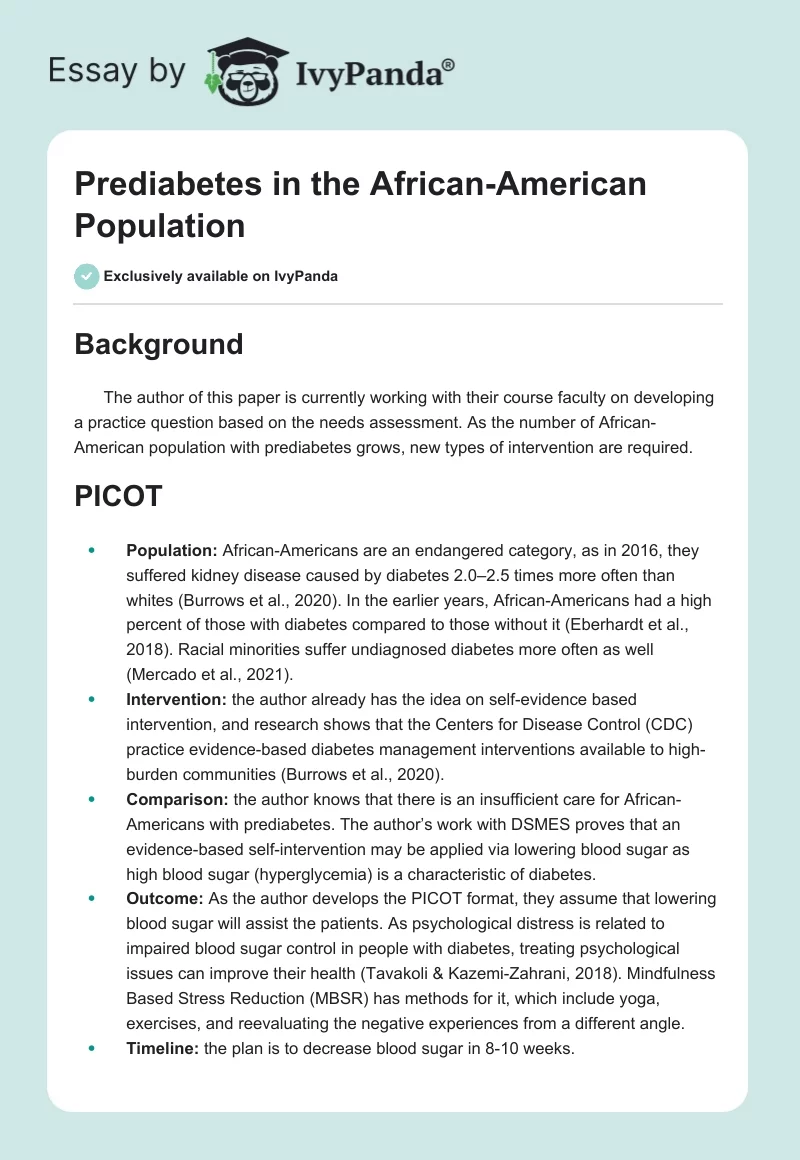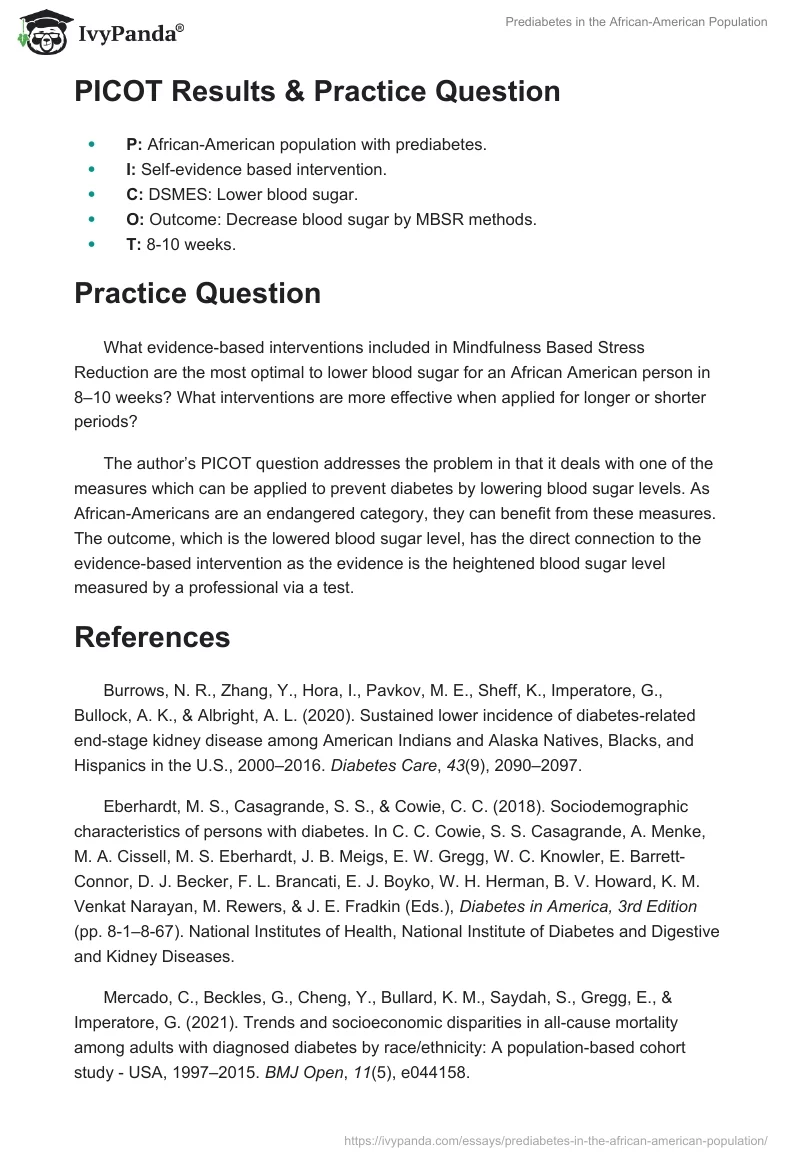Background
The author of this paper is currently working with their course faculty on developing a practice question based on the needs assessment. As the number of African-American population with prediabetes grows, new types of intervention are required.
PICOT
- Population: African-Americans are an endangered category, as in 2016, they suffered kidney disease caused by diabetes 2.0–2.5 times more often than whites (Burrows et al., 2020). In the earlier years, African-Americans had a high percent of those with diabetes compared to those without it (Eberhardt et al., 2018). Racial minorities suffer undiagnosed diabetes more often as well (Mercado et al., 2021).
- Intervention: the author already has the idea on self-evidence based intervention, and research shows that the Centers for Disease Control (CDC) practice evidence-based diabetes management interventions available to high-burden communities (Burrows et al., 2020).
- Comparison: the author knows that there is an insufficient care for African-Americans with prediabetes. The author’s work with DSMES proves that an evidence-based self-intervention may be applied via lowering blood sugar as high blood sugar (hyperglycemia) is a characteristic of diabetes.
- Outcome: As the author develops the PICOT format, they assume that lowering blood sugar will assist the patients. As psychological distress is related to impaired blood sugar control in people with diabetes, treating psychological issues can improve their health (Tavakoli & Kazemi-Zahrani, 2018). Mindfulness Based Stress Reduction (MBSR) has methods for it, which include yoga, exercises, and reevaluating the negative experiences from a different angle.
- Timeline: the plan is to decrease blood sugar in 8-10 weeks.
PICOT Results & Practice Question
- P: African-American population with prediabetes.
- I: Self-evidence based intervention.
- C: DSMES: Lower blood sugar.
- O: Outcome: Decrease blood sugar by MBSR methods.
- T: 8-10 weeks.
Practice Question
What evidence-based interventions included in Mindfulness Based Stress Reduction are the most optimal to lower blood sugar for an African American person in 8–10 weeks? What interventions are more effective when applied for longer or shorter periods?
The author’s PICOT question addresses the problem in that it deals with one of the measures which can be applied to prevent diabetes by lowering blood sugar levels. As African-Americans are an endangered category, they can benefit from these measures. The outcome, which is the lowered blood sugar level, has the direct connection to the evidence-based intervention as the evidence is the heightened blood sugar level measured by a professional via a test.
References
Burrows, N. R., Zhang, Y., Hora, I., Pavkov, M. E., Sheff, K., Imperatore, G., Bullock, A. K., & Albright, A. L. (2020). Sustained lower incidence of diabetes-related end-stage kidney disease among American Indians and Alaska Natives, Blacks, and Hispanics in the U.S., 2000–2016. Diabetes Care, 43(9), 2090–2097.
Eberhardt, M. S., Casagrande, S. S., & Cowie, C. C. (2018). Sociodemographic characteristics of persons with diabetes. In C. C. Cowie, S. S. Casagrande, A. Menke, M. A. Cissell, M. S. Eberhardt, J. B. Meigs, E. W. Gregg, W. C. Knowler, E. Barrett-Connor, D. J. Becker, F. L. Brancati, E. J. Boyko, W. H. Herman, B. V. Howard, K. M. Venkat Narayan, M. Rewers, & J. E. Fradkin (Eds.), Diabetes in America, 3rd Edition (pp. 8-1–8-67). National Institutes of Health, National Institute of Diabetes and Digestive and Kidney Diseases.
Mercado, C., Beckles, G., Cheng, Y., Bullard, K. M., Saydah, S., Gregg, E., & Imperatore, G. (2021). Trends and socioeconomic disparities in all-cause mortality among adults with diagnosed diabetes by race/ethnicity: A population-based cohort study – USA, 1997–2015. BMJ Open, 11(5), e044158.
Tavakoli, Z., & Kazemi-Zahrani, H. (2018). The effectiveness of mindfulness based stress reduction intervention on emotion regulation problems and blood sugar control in patients with diabetes type II. Global Journal of Health Science, 10(3), 111.


